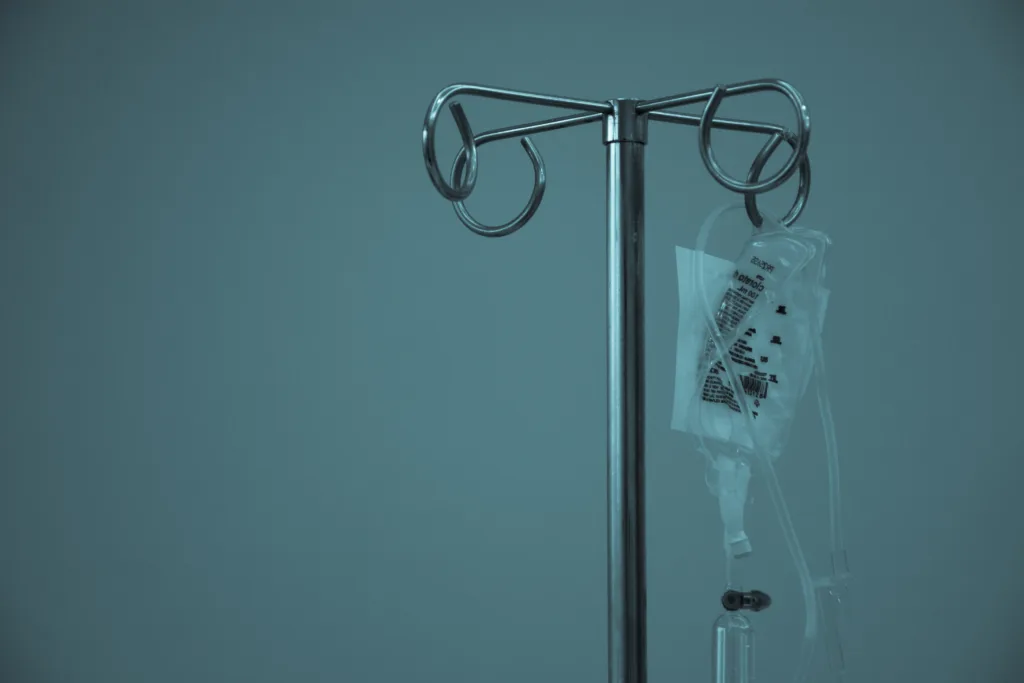
In this article, we will explore whether Reiki, a form of alternative therapy, can effectively lower blood pressure. We will discuss the principles of Reiki and how it is believed to benefit the body. Additionally, we will examine any scientific evidence or studies that support or refute Reiki’s potential for reducing blood pressure. By the end, you will have a better understanding of whether Reiki could be a suitable approach for managing high blood pressure.

What is Reiki?
Reiki is a Japanese healing technique that uses the power of energy to promote relaxation, stress reduction, and overall well-being. The word Reiki is derived from two Japanese words: “rei” meaning universal or higher power, and “ki” meaning life force energy. The practice of Reiki involves the transfer of this healing energy through the hands of a practitioner to the recipient’s body. Reiki is often used to complement conventional medical treatments and is considered a form of complementary medicine.
Definition of Reiki
Reiki is often defined as a holistic healing practice that involves the channeling of energy through the hands of a trained practitioner to stimulate the natural healing processes of the recipient’s body. It is believed that when the life force energy is high and flowing freely, the body is in a state of balance and health. Conversely, when the energy is low or blocked, it can contribute to physical and emotional imbalances.
Origin and philosophy of Reiki
Reiki was developed in the early 20th century by Mikao Usui, a Japanese Buddhist monk. Usui believed that by tapping into the universal life force energy, one could promote physical and emotional healing. The philosophy behind Reiki is rooted in the idea that energy is the foundation of all life, and by accessing and balancing this energy, one can achieve a state of well-being.
How Reiki works
During a Reiki session, the practitioner places their hands lightly on or just above the recipient’s body in specific hand positions. The practitioner then acts as a conduit for the healing energy to flow through their hands and into the recipient’s body. This energy is said to promote relaxation, reduce stress, and stimulate the body’s natural healing processes.
Understanding Blood Pressure
Definition of blood pressure
Blood pressure refers to the force of blood pushing against the walls of the arteries as the heart pumps it. It is recorded as two numbers: systolic pressure over diastolic pressure. Systolic pressure represents the force when the heart is contracting, while diastolic pressure represents the force when the heart is at rest.
High blood pressure and its health risks
High blood pressure, also known as hypertension, is a condition in which the force of blood against the artery walls is consistently too high. If left uncontrolled, it can lead to serious health problems such as heart disease, stroke, and kidney failure. High blood pressure is often referred to as the “silent killer” because it typically has no obvious symptoms and can go unnoticed for years until complications arise.
How blood pressure is measured
Blood pressure is measured using a device known as a sphygmomanometer. The device consists of an inflatable cuff that is wrapped around the upper arm and a pressure gauge. To measure blood pressure, the cuff is inflated to temporarily stop the blood flow, and then slowly released while the pressure is being monitored. The measurements are typically recorded in millimeters of mercury (mmHg).
The Connection between Reiki and Blood Pressure
Research on Reiki and blood pressure
While there is limited scientific research specifically examining the effects of Reiki on blood pressure, some studies have suggested a potential positive correlation. A study published in the Journal of Alternative and Complementary Medicine found that participants who received Reiki treatments experienced a significant decrease in blood pressure compared to those who received sham treatments.
Theories on how Reiki may lower blood pressure
There are several theories on how Reiki may help lower blood pressure. One theory suggests that Reiki promotes relaxation and reduces stress, which in turn may lower blood pressure. Another theory suggests that Reiki may work by rebalancing the body’s energy flow, allowing for better overall physical and emotional health.
Potential benefits of using Reiki to lower blood pressure
Using Reiki as a complementary practice for lowering blood pressure may offer several potential benefits. Firstly, Reiki is a non-invasive and gentle practice that is generally considered safe to use alongside conventional medical treatments. Secondly, Reiki promotes relaxation and stress reduction, which are key factors in maintaining healthy blood pressure levels. Lastly, Reiki may stimulate the body’s natural healing processes, potentially leading to improved overall health and well-being.
Reiki Techniques for Lowering Blood Pressure
Hand positions for treating high blood pressure
During a Reiki session, specific hand positions can be used to target the areas associated with high blood pressure. These positions may include the head, neck, chest, and abdomen. By focusing the healing energy on these areas, practitioners aim to promote relaxation, stress reduction, and improved blood flow.
Visualization techniques
In addition to hand positions, visualization techniques can be incorporated into Reiki sessions to aid in lowering blood pressure. Practitioners may encourage recipients to visualize their blood pressure lowering to a healthy range, arteries becoming relaxed and unobstructed, and overall energy flow becoming harmonious and balanced.
Chakra healing and blood pressure
Chakras are energy centers in the body, and balancing these chakras is an important aspect of Reiki. Certain chakras, such as the heart chakra, are associated with emotions, stress, and relaxation. By focusing on balancing these chakras during a Reiki session, practitioners aim to promote emotional well-being and reduce stress, which may in turn contribute to lower blood pressure.

Other Complementary Practices for Lowering Blood Pressure
Yoga and blood pressure
Yoga is a mind-body practice that combines physical postures, breathing exercises, and meditation. Several studies have suggested that practicing yoga regularly can help lower blood pressure. Yoga promotes relaxation, reduces stress, and improves overall cardiovascular health, which are all beneficial for managing blood pressure.
Meditation and blood pressure
Meditation is a practice that involves focusing the mind and achieving a state of deep relaxation and awareness. Research has shown that regular meditation can have a positive impact on blood pressure by reducing stress and promoting overall well-being.
Acupuncture and blood pressure
Acupuncture is a traditional Chinese medicine practice that involves inserting thin needles into specific points on the body. Some studies have suggested that acupuncture may help lower blood pressure by promoting relaxation, reducing stress, and improving circulation.
Medical Perspective on Reiki for Blood Pressure
Medical community’s view on Reiki
The medical community’s view on Reiki for blood pressure management is varied. While some healthcare professionals acknowledge the potential benefits of Reiki as a complementary practice, many remain skeptical due to the limited scientific evidence available. Reiki is often seen as a complementary therapy that can be used in conjunction with conventional medical treatments, but it is not typically recommended as a sole treatment for high blood pressure.
Limited scientific evidence
It is important to note that there is a lack of robust scientific evidence specifically examining the effects of Reiki on blood pressure. Many studies have small sample sizes and methodological limitations, making it difficult to draw definitive conclusions. More research is needed to better understand the potential benefits and mechanisms of action of Reiki in blood pressure management.
Potential risks or side effects
Reiki is generally considered safe and non-invasive, with minimal risks or side effects reported. However, it is important to consult with a qualified healthcare professional before incorporating Reiki into a blood pressure management plan, especially if you have any underlying health conditions or are taking medication. Additionally, it is crucial to find a reputable and experienced Reiki practitioner to ensure a safe and effective session.

Case Studies and Personal Experiences
Personal testimonials on Reiki and blood pressure
Many individuals have reported positive experiences with using Reiki to manage their blood pressure. Personal testimonials often highlight the calming and relaxing effects of Reiki, as well as improvements in overall well-being. While personal testimonials are valuable, it is important to remember that they are not scientific evidence and individual experiences may vary.
Case studies of individuals using Reiki for blood pressure management
Several case studies have been published documenting the experiences of individuals who have used Reiki as a complementary practice for blood pressure management. These case studies often report positive outcomes, including reductions in blood pressure readings and improvements in overall health and well-being. However, it is important to note that case studies are limited in their generalizability and do not provide conclusive evidence.
Overall success rates
Due to the limited scientific research available, it is difficult to determine the overall success rates of using Reiki to lower blood pressure. Success rates may vary depending on individual factors such as the severity of high blood pressure, overall health, and lifestyle choices. It is important to approach Reiki as a complementary practice and not rely solely on it for blood pressure management.
Considering Reiki as a Complementary Approach
Reiki as a complementary therapy
Reiki is often used as a complementary therapy alongside conventional medical treatments for various health conditions, including high blood pressure. It is important to discuss your interest in Reiki with your healthcare provider to ensure it is integrated safely and effectively into your overall treatment plan.
Integrating Reiki with conventional medical treatments
If you are considering using Reiki to complement your blood pressure management, it is important to inform your healthcare provider. They can provide guidance and ensure that Reiki is used in conjunction with other evidence-based treatments. It is important to remember that Reiki should not replace conventional medical treatments for high blood pressure.
Finding qualified Reiki practitioners
When seeking a Reiki practitioner, it is important to find someone who is qualified and experienced. Look for individuals who have completed a reputable Reiki training program and are certified practitioners. It may also be beneficial to seek recommendations from trusted sources, such as healthcare providers or other individuals who have had positive experiences with Reiki.
Tips for Trying Reiki to Lower Blood Pressure
Research and choose a reputable Reiki practitioner
Take the time to research and choose a qualified and reputable Reiki practitioner. Ask about their training, certifications, and experience in working with blood pressure management. Reading reviews and seeking recommendations can also help guide your decision.
Communicate with your healthcare provider
Before incorporating Reiki into your blood pressure management plan, it is important to discuss your intentions with your healthcare provider. They can provide guidance, address any concerns, and ensure that Reiki is integrated safely and effectively into your overall treatment plan.
Setting realistic expectations
While Reiki may provide relaxation and potential benefits for managing blood pressure, it is important to set realistic expectations. Results may vary and it is likely that Reiki will be most effective when used in conjunction with other evidence-based treatments for high blood pressure.
Conclusion
In conclusion, Reiki may hold potential as a complementary approach for lowering blood pressure. While limited scientific research is available, personal testimonials and some case studies suggest positive outcomes. Reiki promotes relaxation, stress reduction, and overall well-being, which are beneficial for managing blood pressure. However, it is important to approach Reiki as a complementary therapy and not a sole treatment for high blood pressure. Consult with a qualified healthcare professional, research reputable Reiki practitioners, and set realistic expectations when considering Reiki for blood pressure management. Further research is needed to better understand the mechanisms of action and overall effectiveness of Reiki in this context.









